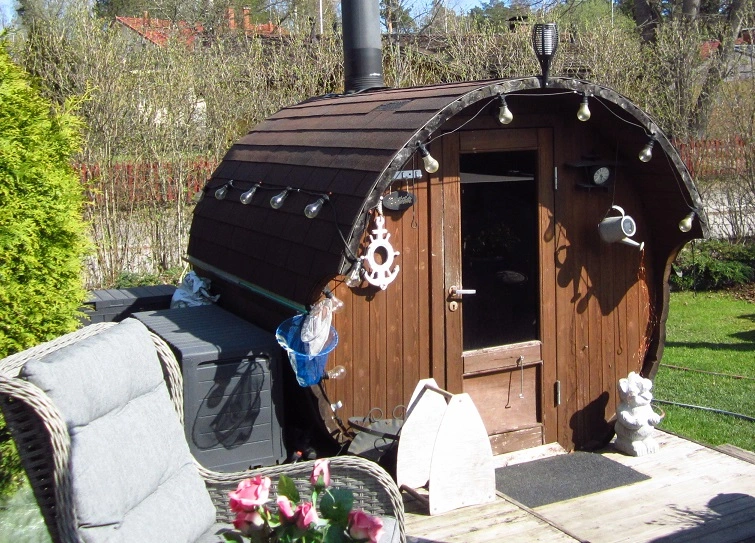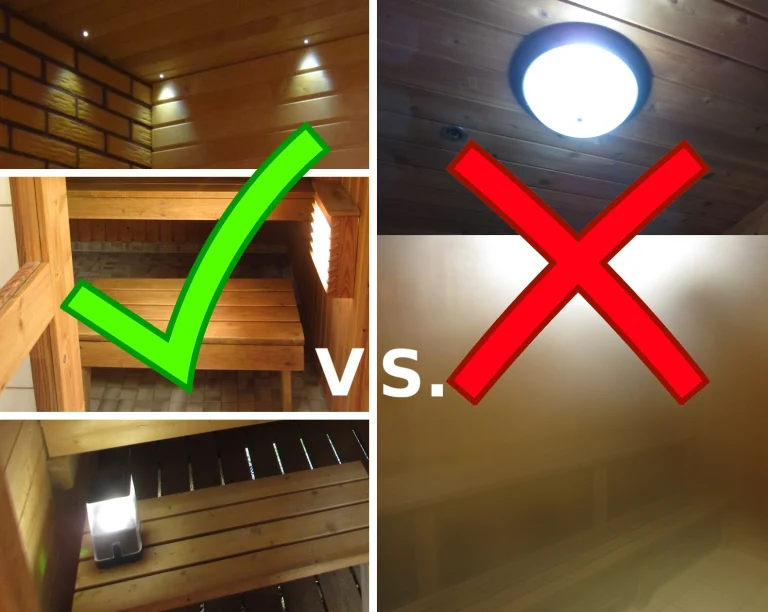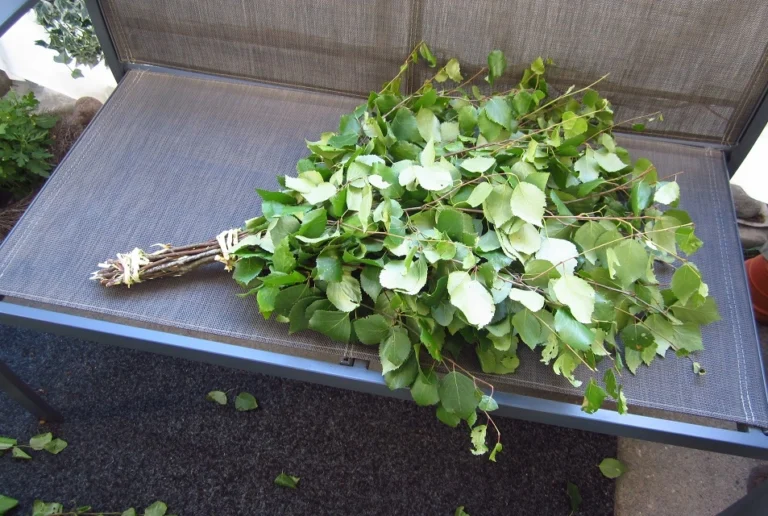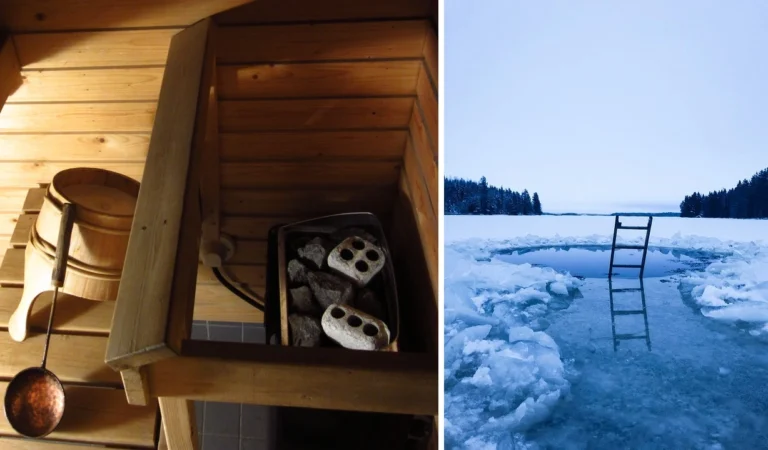Sauna Rocks: The #1 Bargain to a Steamy Sauna
Whether wood-burning or electric, sauna heaters are used with sauna rocks, but why?
And how to ensure you’re choosing the best sauna stones and thus, getting the most out of your sauna? And wouldn’t it be great if you could pick the stones yourself from the outdoors? (Read on before doing that!)
In this article I’m going to answer all these questions while replacing old sauna rocks with new ones in my own sauna. I’ll also show examples of different sauna stone options that are officially approved for saunas.
One thing before we move on: are sauna rocks the same as sauna stones? Yes, these terms are used interchangeably, meaning there’s no difference between the two.

What Is the Purpose of Sauna Stones?
Lately I’ve come across a lot of sauna misinformation when it comes to sauna rocks, with different sources claiming that
❌ sauna rocks are a nice addition to your sauna heater but not a must; you can heat your sauna with the heater alone OR with heated rocks (this is FALSE)
❌ you can leave an electric sauna heater empty and place a few rocks on top of the heating elements (this is FALSE)
These dreadful claims above have some of us gasping with disbelief, but unfortunately, they’re very common in online articles written for English-speaking audiences.
They also reveal that the purpose of sauna rocks is unclear to many people, so let’s see what they’re really for:
✅ Every sauna heater, electric or wood-burning, requires sauna rocks; they’re never optional. The heater heats the sauna rocks that you then pour water on to produce steam (löyly), which is the essence of sauna.
✅ The best sauna rocks have great heat retention capacity and thermal conductivity, meaning they stay hot for long and release that heat, ensuring proper löyly.
✅ You’re always meant to throw water on the hot sauna rocks; that water instantly evaporates, creating steam (löyly), which is the whole point of saunaing. Dry sauna is not a thing!

What Kind of Rocks Do You Use in a Sauna?
Can you use lava rocks for a sauna? Yes, lava rocks, also called as igneous rocks or volcanic rocks that are formed by the cooling and hardening of magma, are exactly what the most known sauna brands recommend.
They retain heat effectively and guarantee consistent heat.
Ceramic sauna rocks made of clay are also an option (more on them later).
Another important factor is durability, which ensures the rocks can withstand high temperatures without cracking or breaking.
Thirdly, low porosity is key. Ever heard of sauna rocks exploding? That doesn’t really happen with rocks designed for saunas as they have minimal pores that reduce the risk of cracking caused by rapid temperature changes.
Even with sauna rocks popping, which is normal for a used and aged sauna rock, it happens inside the heater and can hardly be called exploding.
Stones that are not suitable for sauna use can explode, though. In one durability test (linked later in the article), red granite that’s meant only for decorative use on top of other sauna rocks was the first one to burst.

The following types of stones are approved for sauna heaters:
✅ peridotite – these stones are deemed the best sauna rocks in durability, but they have gotten increasingly rare because they were linked to asbestos before the 2000s; the peridotite you find today for saunas is tested for asbestos
✅ olivine diabase (olivine gabbro) – this rock is less durable than peridotite, but has a good price-quality ratio and safety profile; it’s also much more easy to find on the US market than peridotite
✅ olivine (troctolite) – this less common option is heavier than its cousin olivine diabase, which correlates with better heat retention
✅ vulcanite – this blackish option is more durable than olivine diabase but less than olivine; I tested one batch for years and found it worked really well and looked amazing with silver (for many, the aesthetic of sauna stones is also a consideration):
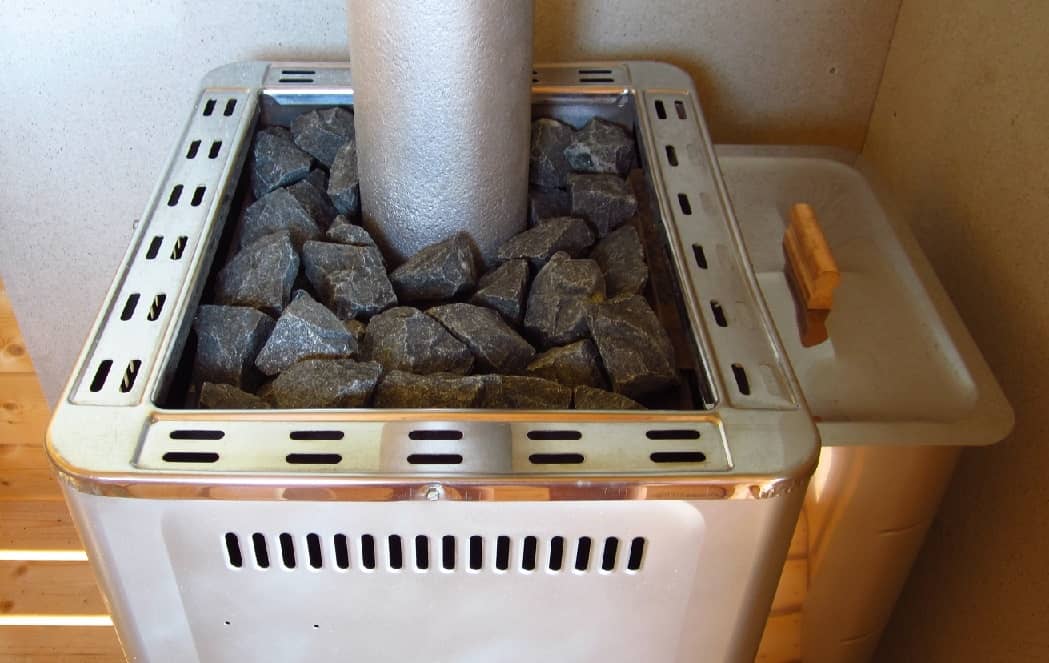
The four types above are the only sauna stones the popular sauna brand Harvia (widely sold in the US) allows in their sauna heaters. Another well-known brand, Huum, also seems to abide by these recommendations, with olivine diabase as their favorite.
Other possible options with some (local) variation:
🔶 basalt – a viable option in the US (some of the best sauna tent packages come with basalt sauna rocks), but basalt isn’t identical in all parts of the world; in Iceland, for example, basalt is more vesicular, which means it contains lots of small holes, making it porous and therefore far from ideal for sauna use
🔶 granite – claimed to be great in English sources, but was the first rock type to crumble into bits and pieces in a Finnish durability test in 2019; it’s no wonder Harvia, for instance, allows granite sauna rocks to be used only on top of other stones for decorative purposes as they’re not allowed to touch the heating elements
🔶 soapstone – not durable enough to be used throughout the heater, but can be used on top of other rocks for decorative purposes; in correct use, soapstone can easily outlive many other rocks

Ceramic sauna stones (like the brand Kerkes) are the only artificial rocks in this listing, made of clay, resulting in mostly glass that develops when clay is processed in extremely high temperatures, almost melting the glass to form a hard, durable “rock.”
People debate about ceramic sauna rocks the most, some loving their durability and lifespan that’s easily at least twice as long as with traditional sauna rocks, meaning less maintenance as the stones don’t have to be replaced nearly as often.
Some, on the contrary, don’t like them in home use, think they’re ugly, and that their heat retention capacity is poorer than that of ordinary stones. They’re also not allowed to be used in all sauna heaters. They’re much more common in commercially used saunas due to savings in maintenance costs.
A few rock types, such as hornblendite, diorite, and chromite (chromium ore) were once used as sauna stones, but not anymore. It’s not clear why, so one can only assume it has something to do with availability and/or safety.
Sauna Stone Sizes, Shapes & Colors
Getting the right-sized sauna stones is equally important as durability and safety since too large stones obviously won’t fit (in electric heaters) while too small stones stack up too tightly, not allowing air to flow, which is important for proper heater function.
An electric heater requires smaller stones (2“- 4” (5-10 cm)) than a wood-burning one as the rocks have to fit in between the heating elements. Stones used in a wood-burning heater can be slightly but not significantly bigger.
Regarding the shapes, they affect what kind of steam (löyly) you get: rounded and smooth stones bring softer steam as the water has no rugged surfaces to absorb to.
With rounded sauna stones, there’s also less size variation, and they’re easier to stack.
Angular stones, on the other hand, are often as asymmetrical as possible, which gives them a large water surface area, resulting in more intense-feeling heat and steam.
Most sauna rocks are either gray, blackish or white. The white ones are usually decorative and only recommended to be used on top of other sauna stones. Granite can be reddish while ceramic sauna stones are brownish.
Remember that you can mix different stones for löyly and/or aesthetic reasons: you can have angular stones but place rounded stones only on top of them; this will soften the steam. The rounded stones on top can also be red granite or white, for instance, if you prefer such a look.

DIY Sauna Rocks? A Huge Maybe
As sauna rocks can be expensive and not widely available, many people ask themselves the same question: can I use any stones for a sauna?
The official answer is clear and one that all sauna manufactures agree on: you shouldn’t pick rocks for your sauna heater from the beach or nearby forest, for instance.
But are they saying that just to make money on something you could get for free?
That’s a good question as saunas have existed for thousands of years; people obviously picked and used rocks directly from the outdoors as there weren’t any sauna companies to buy stones from. Some people even tested the rocks by the fire before using them in the sauna, just to see how they behaved and handled the heat.
Nowadays, though, one of the biggest reasons for not using DIY sauna rocks is the warranty of the sauna heater. If you’ve bought a sauna heater, and the warranty is still valid, I’d stay away from any stones the manufacturer doesn’t recommend since using them will void the warranty.
But, if the warranty has expired ages ago, and it’s time for you to replace old rocks, I’ve found some reputable sources that don’t condemn the idea of picking the stones yourself.
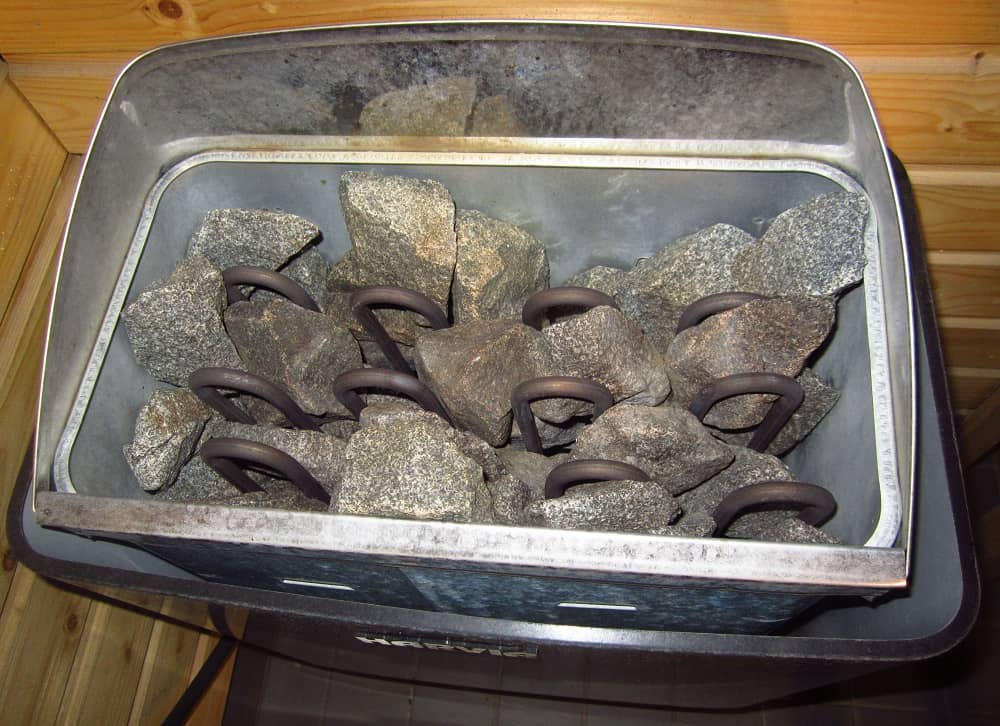
In fact, Finnish sauna competitors ranked natural stones they picked themselves by the Saimaa lake as #1 in a 2011 test that included several commercial sauna rocks as well.
It has to be noted, though, that they really liked the colors, shapes and smell of the self-picked stones while the durability wasn’t that great: during a 3-month test period, some of the rocks split in half in an electric heater while a wood-burning sauna stove destroyed even more rocks!
So, even if you manage to find somewhat suitable sauna stones that you’re also allowed to pick, it’s realistic to expect commercial rocks to last longer.
Whether you buy or pick sauna rocks yourself, they should share these characteristics: they have to be durable, retain enough heat, transfer heat quickly, and be safe to use.
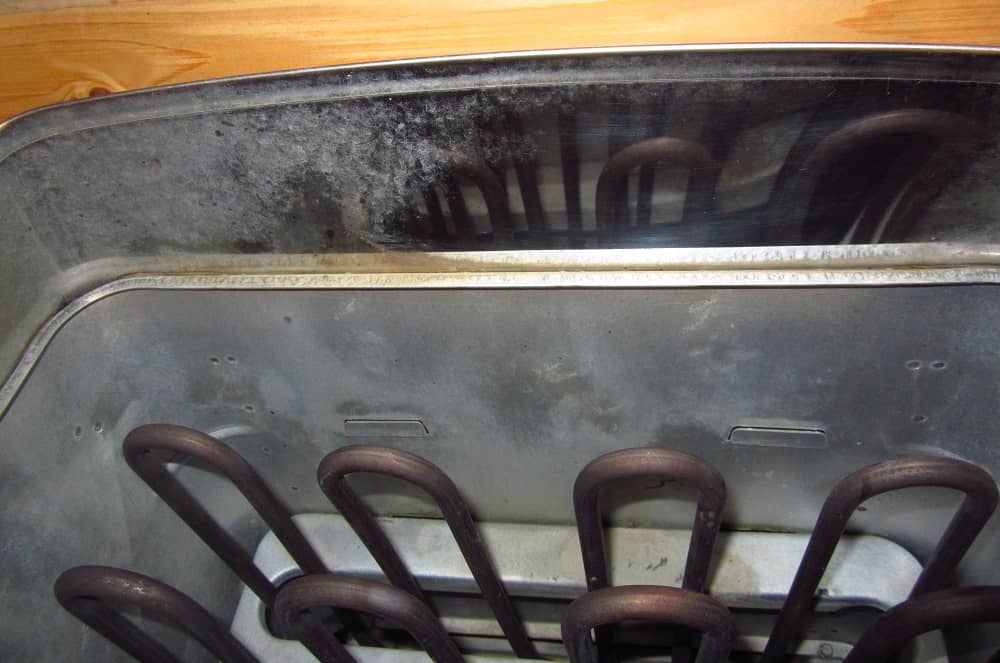
There can still be risks involved:
❌ rusting: many rocks contain iron, which can rust in a hot and humid sauna room; depending on the amount of rust, it can damage your sauna heater and shorten its lifespan
❌ poor heat retention: this is the case with many types of rocks, mainly too porous, too big, and too small stones
❌ poor steam production: this is a no-brainer as not all rocks are created equal for sauna use; stones with low water absorption or improper surface area can’t provide as much steam as suitable sauna rocks
❌ cracking & exploding: all rocks don’t have the same density and durability as stones meant for sauna heaters, leading to cracking and even exploding with most porous rocks; even when not dangerous, it means stones have to be replaced and the heater cleaned often, which is several hours worth of work each time
❌ asbestos & other harmful minerals: asbestos is found in mafic rocks that would otherwise be excellent for sauna heater use; it has been confirmed (Forsman, 1997) that when a rock contains asbestos and is used in a sauna-like setting (water thrown onto it in a hot environment), it releases asbestos particles to the air
If you want to give self-picked stones a chance despite potential risks, you should
- choose sturdy rocks with no cracks; the ones darker and more uniform in color are more durable than lighter and/or patchy stones
- have permission to pick those rocks
- choose shapes and sizes that fit your sauna heater; the stacking shouldn’t be too loose or tight
- test the rocks by hitting two rocks together: if you hear a hollow sound, leave the rock(s)

Frequently Asked Questions (FAQ)
1. How long do sauna rocks last and how often should I change sauna stones?
This depends on how often you go to sauna and what type of rocks you use.
Many manufacturers say you should at least check the stones once a year and restack them, replacing the ones that are seemingly aged and/or that crack during testing.
Not all stones have to be replaced at once every time you replace rocks. Some of them can easily last for at least 2–3 years in regular use. After that the weakening and crumbling will speed up.
2. How to know when to replace an old sauna rock?
Fully broken or slightly cracked stones are the easiest to spot and should be replaced.
Discoloration is another useful clue, indicating the rock has endured a lot.
Many stones pass the visual tests above, but have still weakened so much that they can break in your hands, even when not using any force.
For all rocks that seem and feel fine, you can do a final test just to be sure: grab two rocks and hit them together. If either of them cracks, it should be replaced with a new one.

3. Is it OK to pour water over sauna rocks?
Not only OK, but a must! Both for enjoyment and for best heater functionality.
Pouring water over sauna rocks isn’t just a recommendation, but some sauna heater instruction manuals call it a necessity.
Why do you put water on sauna stones? Doing this produces steam without which sauna-going would be a mere shadow of its former self.
4. How long do sauna rocks take to heat up?
This depends on the size of your sauna and your sauna heater type. Heaters with more rocks take longer to heat but then they also stay hot for longer.
A very small sauna can be ready to use in 25 minutes while my 3-person sauna, for example, requires at least 45 minutes during colder seasons. During summer, it heats faster.
Nowadays there are sauna heaters the rocks of which are heated at all times (thanks to standby heat function), so with a heater like Harvia Forte, it only takes 5–15 minutes for you to get proper löyly.
In heat storing sauna heaters (found in smoke saunas and some other home saunas as well), it takes several hours or even the whole day (!) to heat up the sauna stones.

5. Where to buy sauna rocks?
If you’re struggling to find sauna stones for sale in regular hardware stores near you, you can try:
- Home Depot
- Amazon (with dropshipping taking over, make sure you’re actually getting a good deal)
- (Online) sauna stores (preferably the same one where you purchased your heater from)
If you buy a sauna heater with rocks, many sauna stores offer better deals, e.g., $25 for a 44-pound box of olivine diabase sauna rocks instead of $40–60 for the same box of rocks without the heater.
Avoid machine-translated websites or at least check the reviews they’ve gotten on Trustpilot. It’s easy to spot a rotten egg: usually they have lots of 1-star reviews with a few or more fake 5-star reviews to bring the total rating up.

Final Thoughts
The real question, in the end, is not which sauna rocks are the best since at least all the approved ones work well, but the frequency you replace them with new ones.
Replacing sauna rocks often enough is not only the best way of improving your sauna experience, but it can also easily make it feel like you bought a new sauna heater! That’s truly how big a difference new stones make.
Most people are too lazy to replace sauna stones often enough. I don’t even want to think of all the people I know who haven’t done anything to the rocks in their sauna heaters for 5+, in some cases even for 10+ years!
And it shows because it’s natural for sauna rocks to crumble over time and lose their functions as they start turning into dust. That process takes far less than 10 years!
Some people only replace the stones on top since that’s the easiest thing to do, and you also see the state of those rocks instantly. It’s not enough, however, to just keep doing that year after year.
At some point, you’re going to do your sauna heater a much-appreciated favor when you restack and even replace all the stones.
